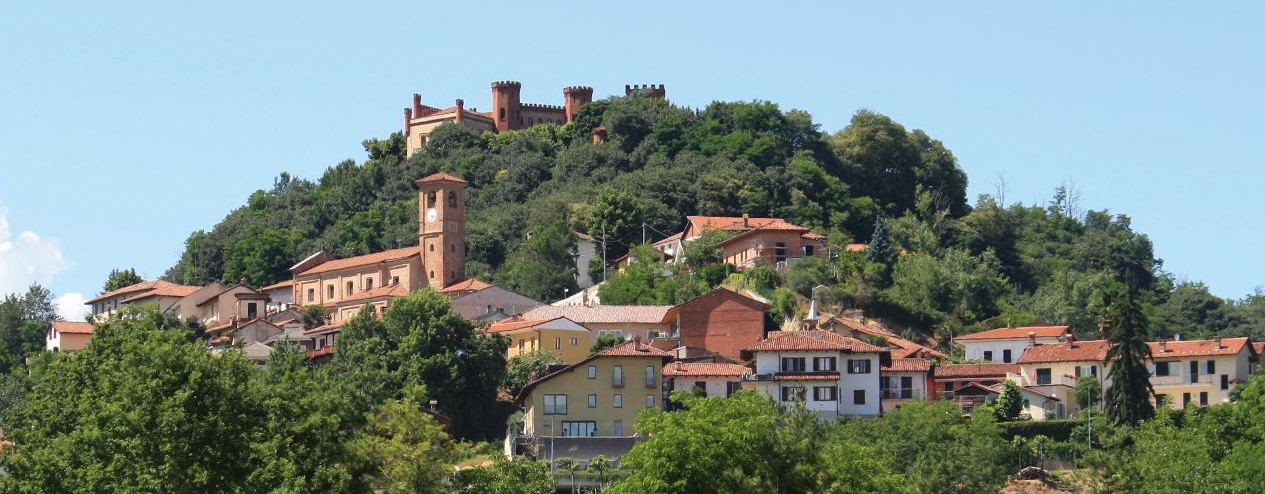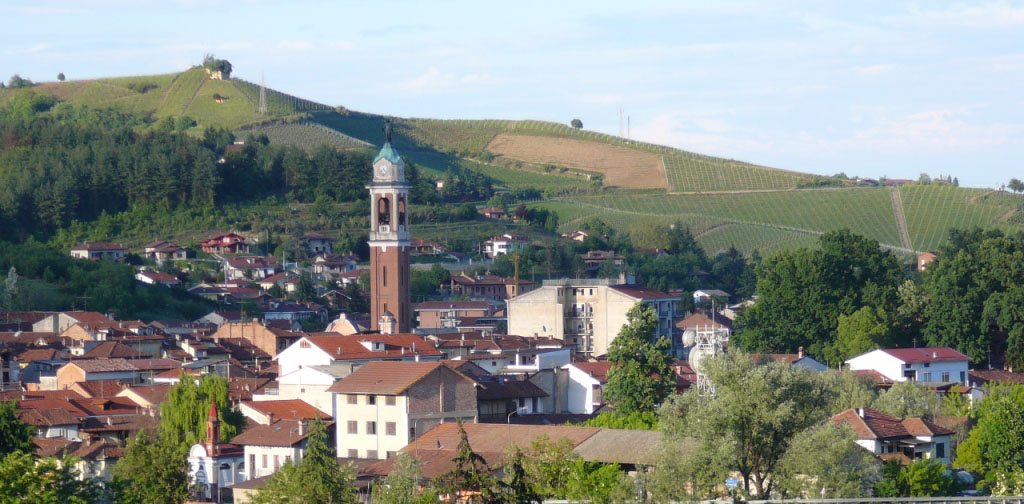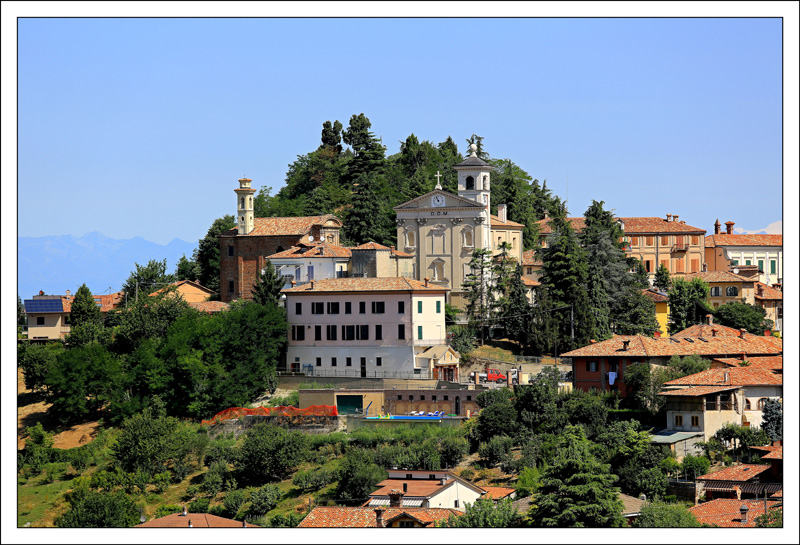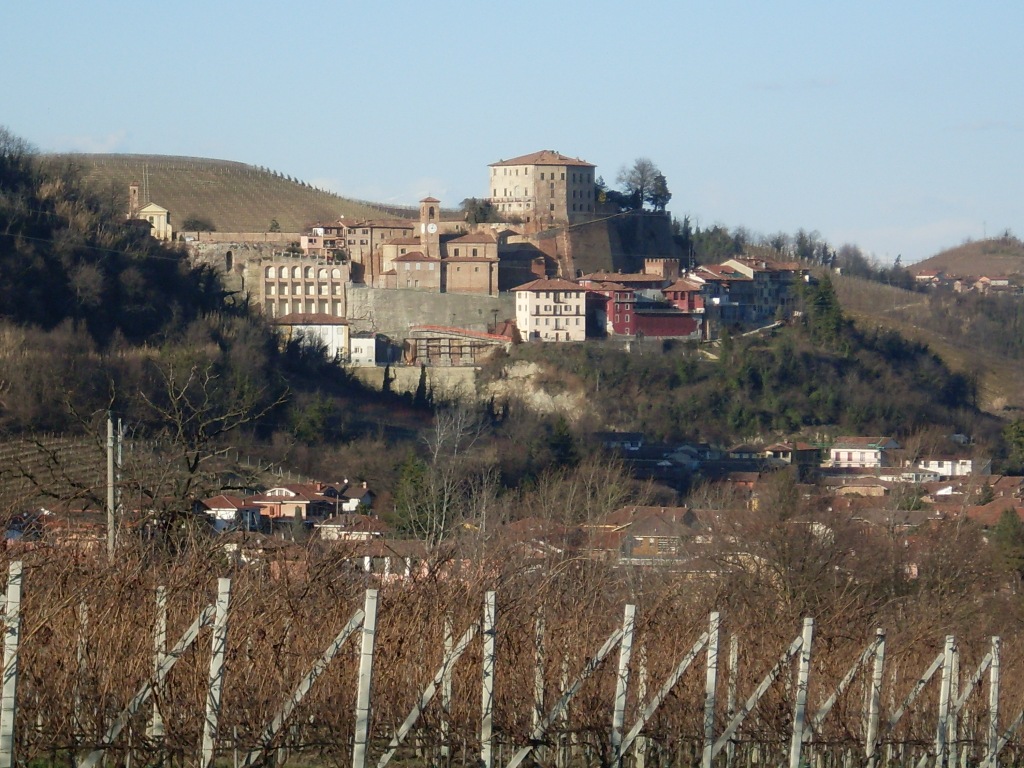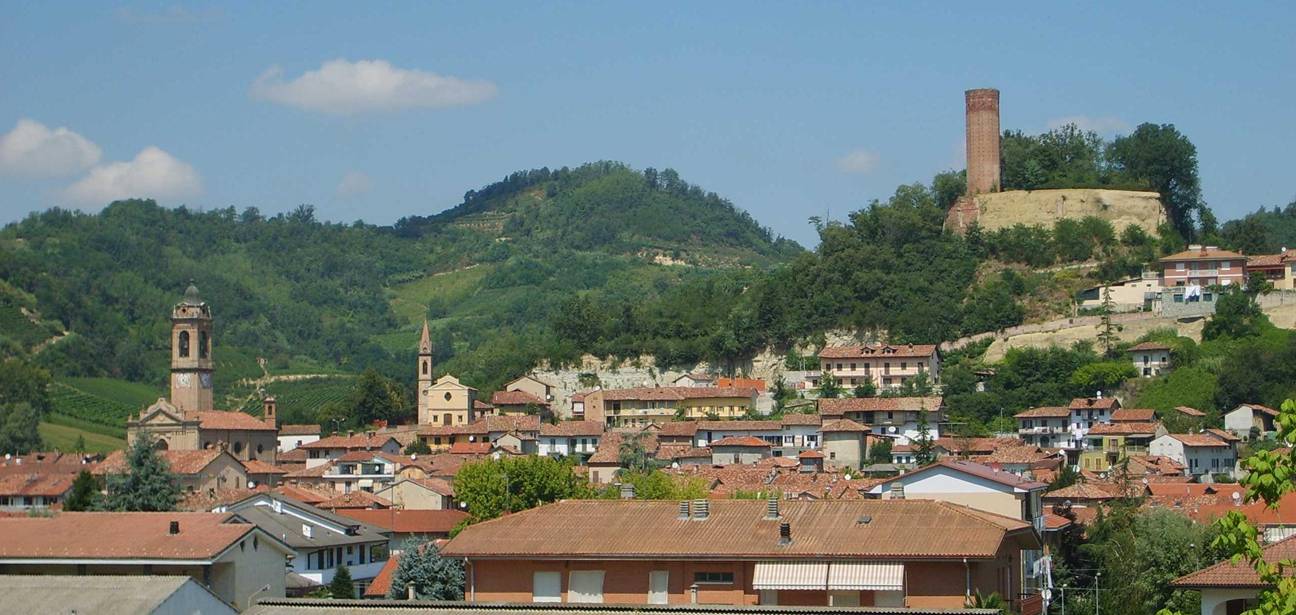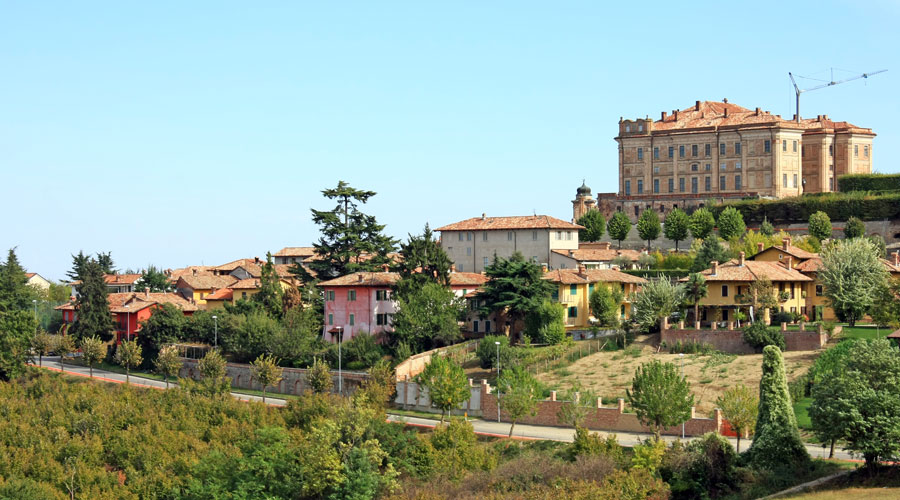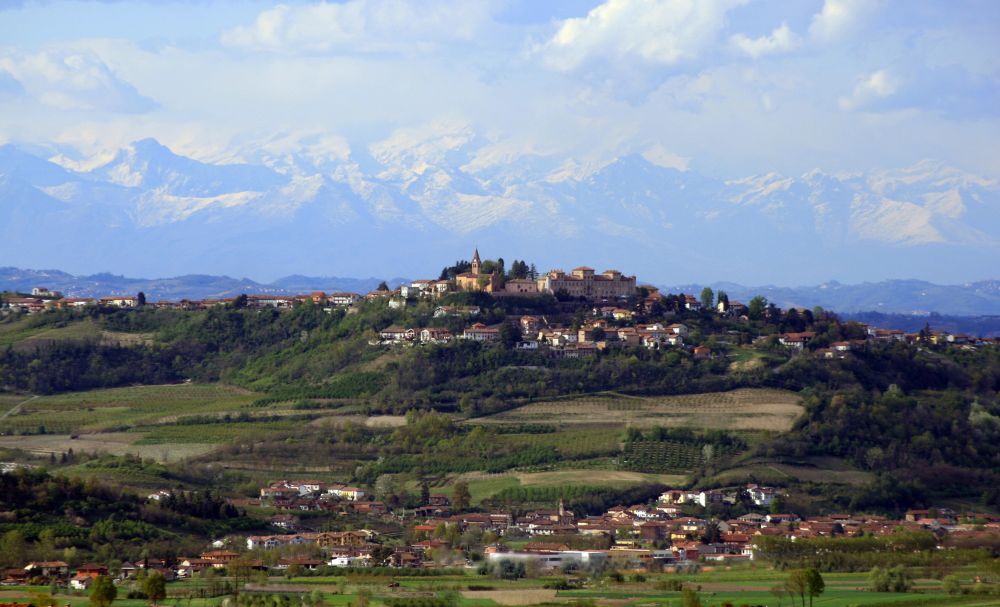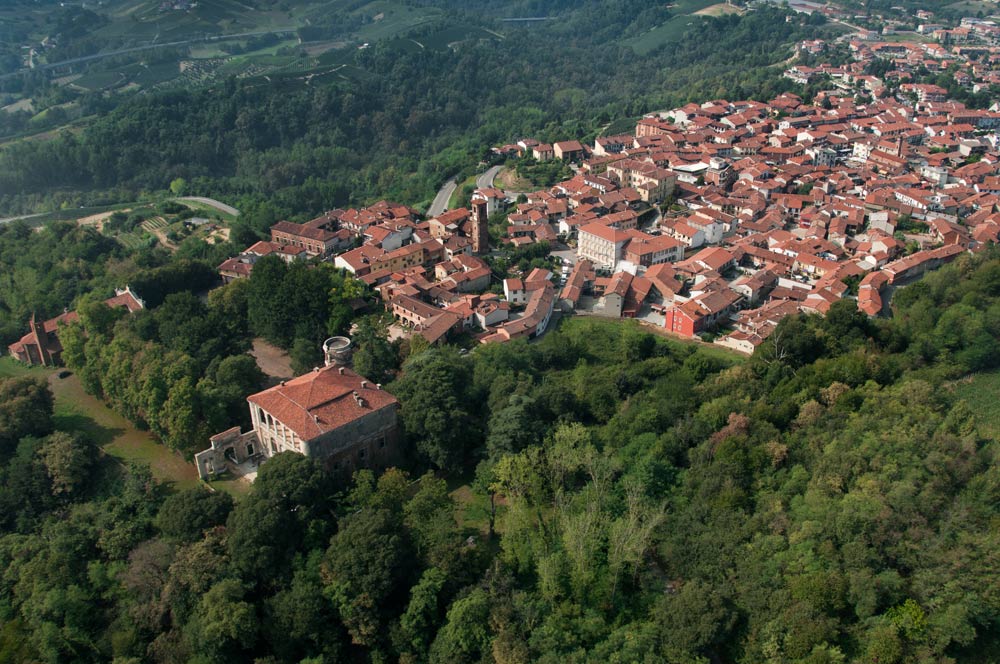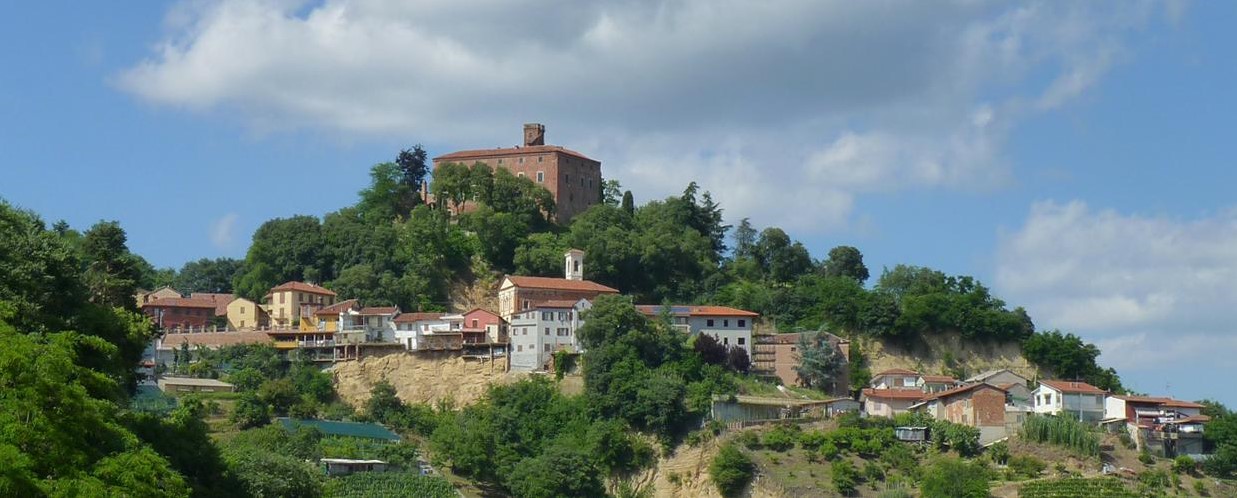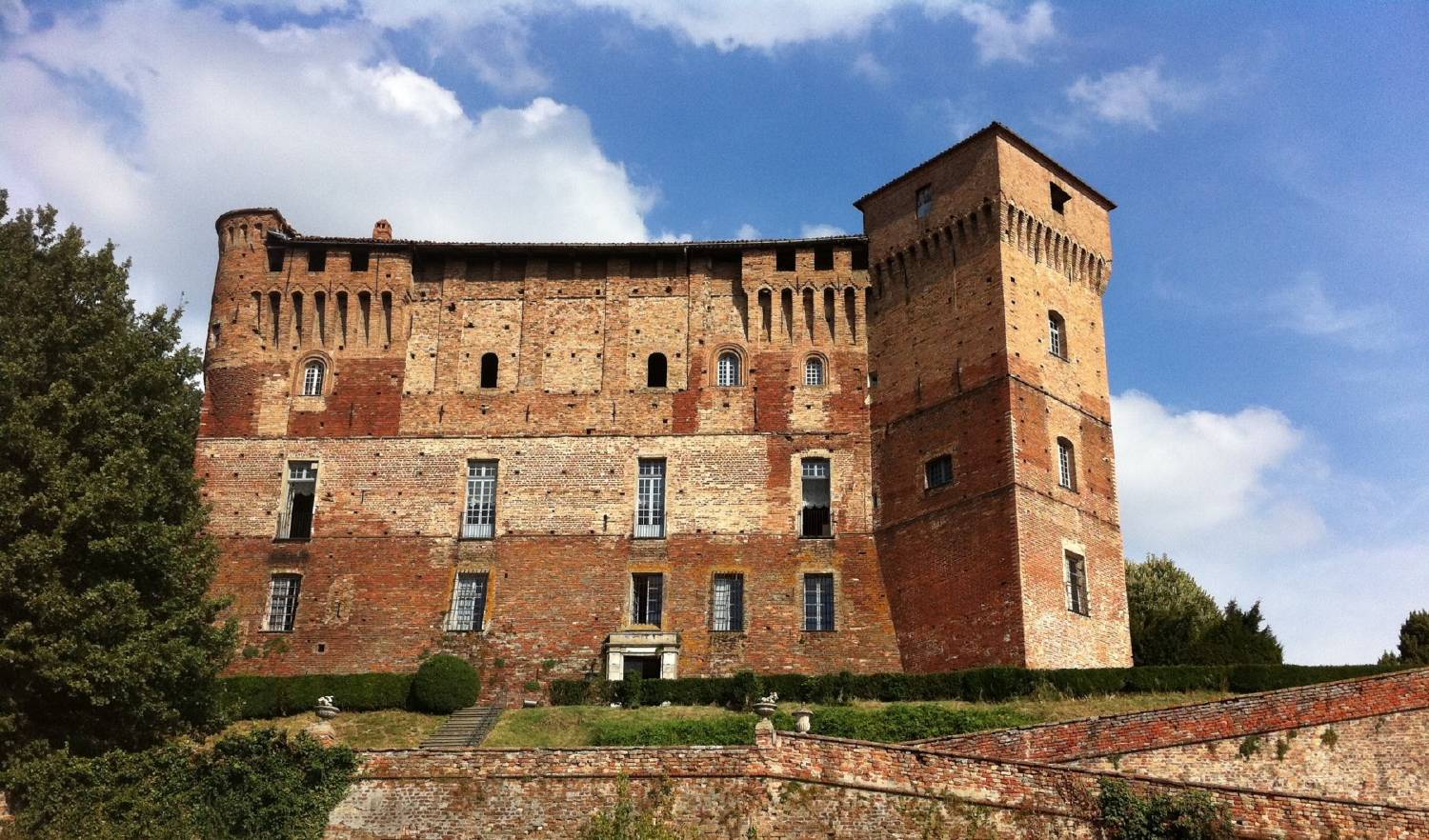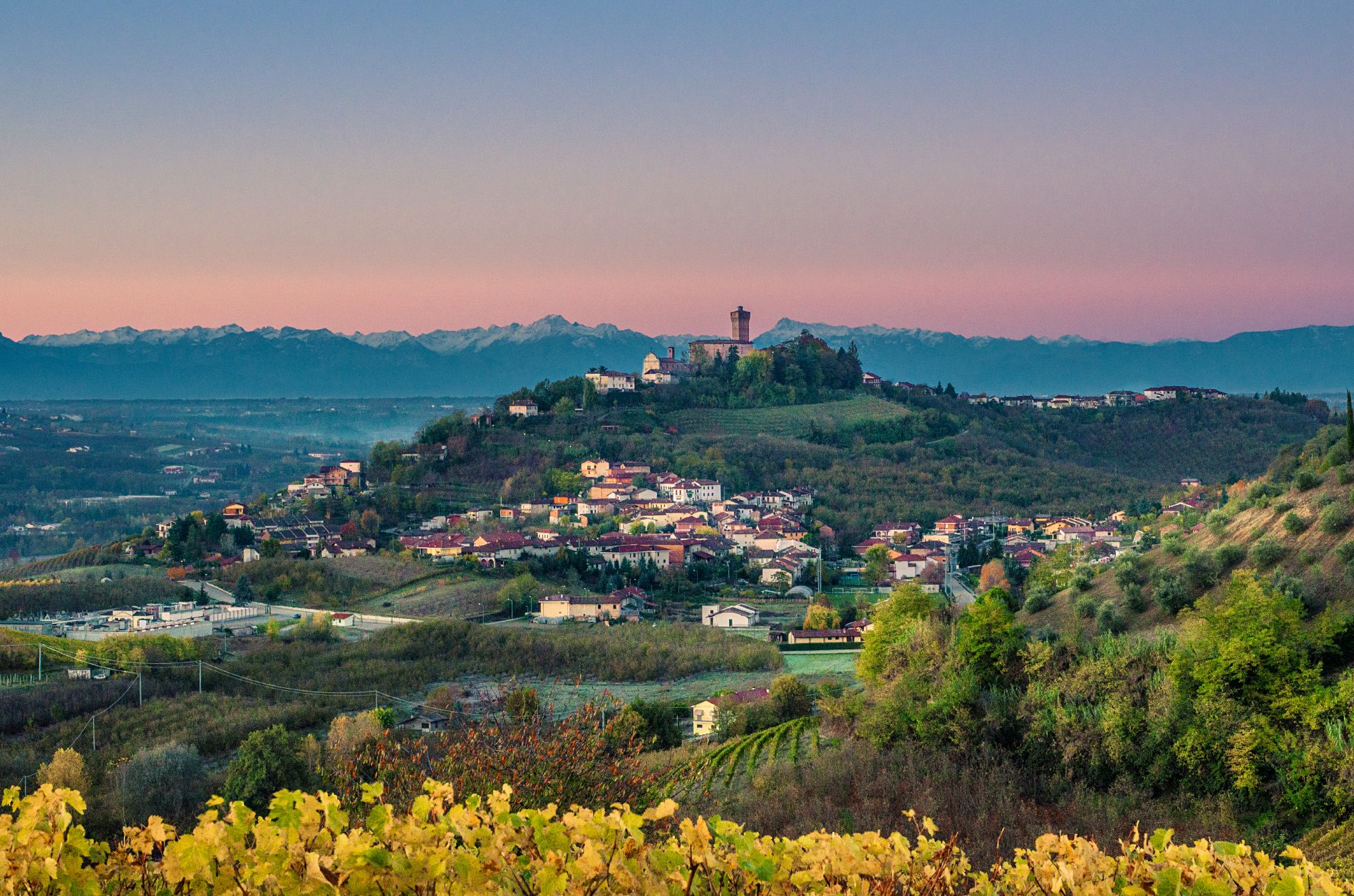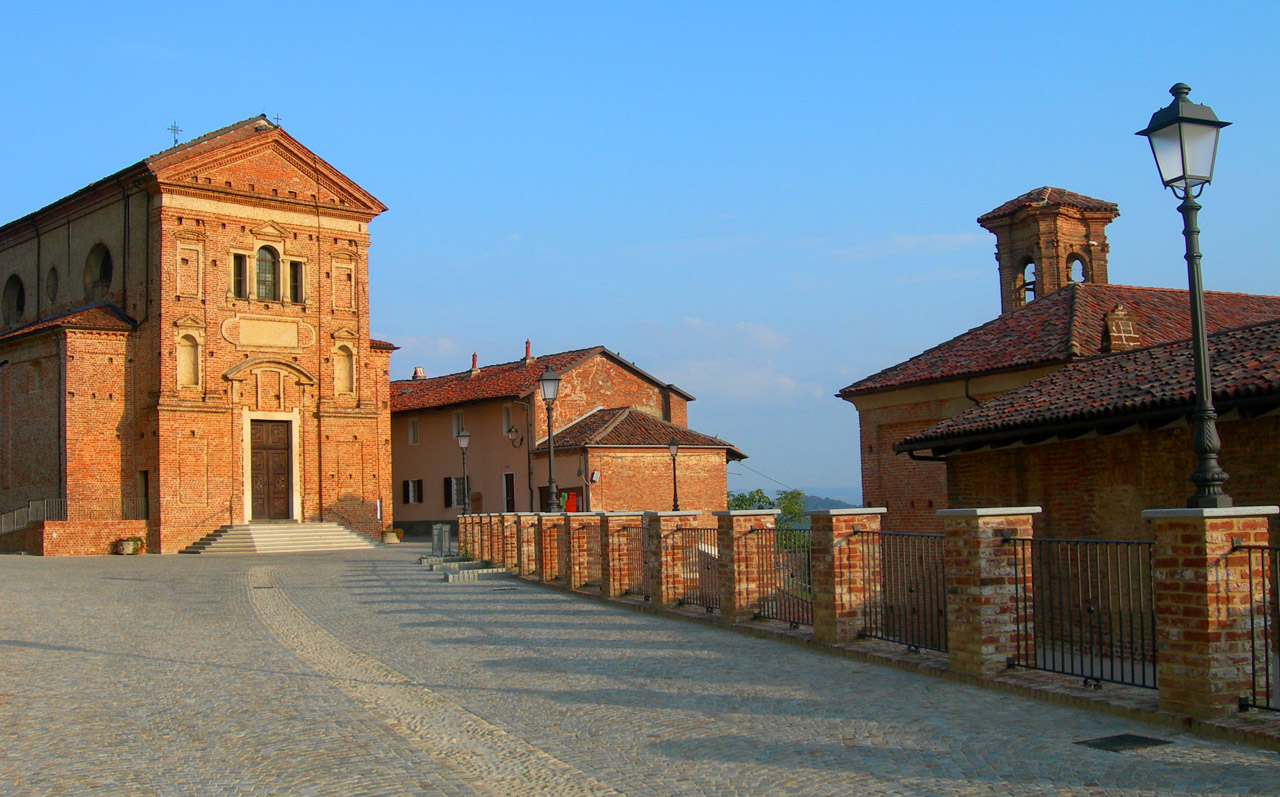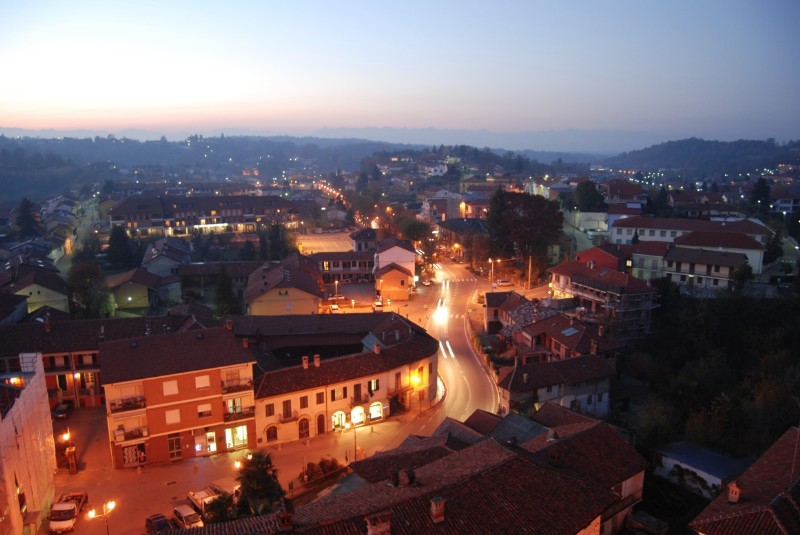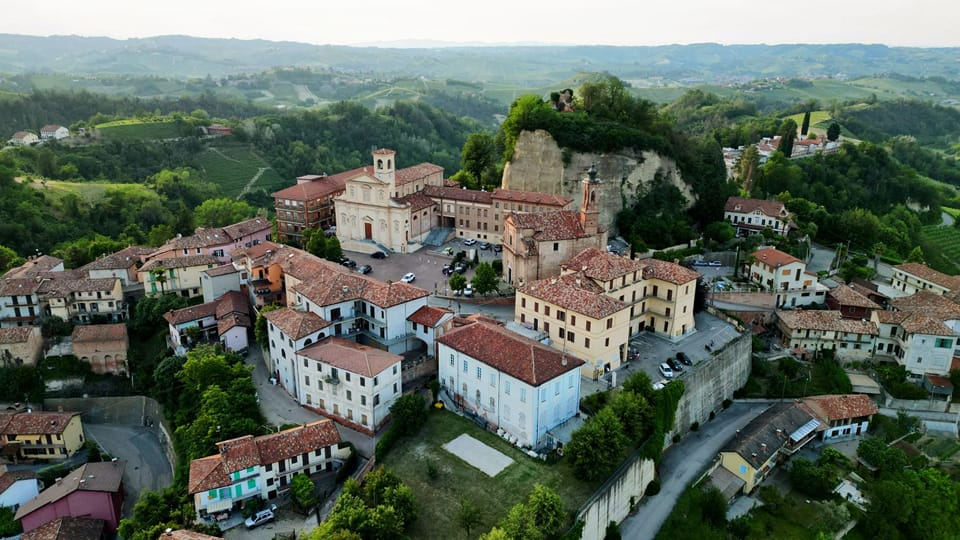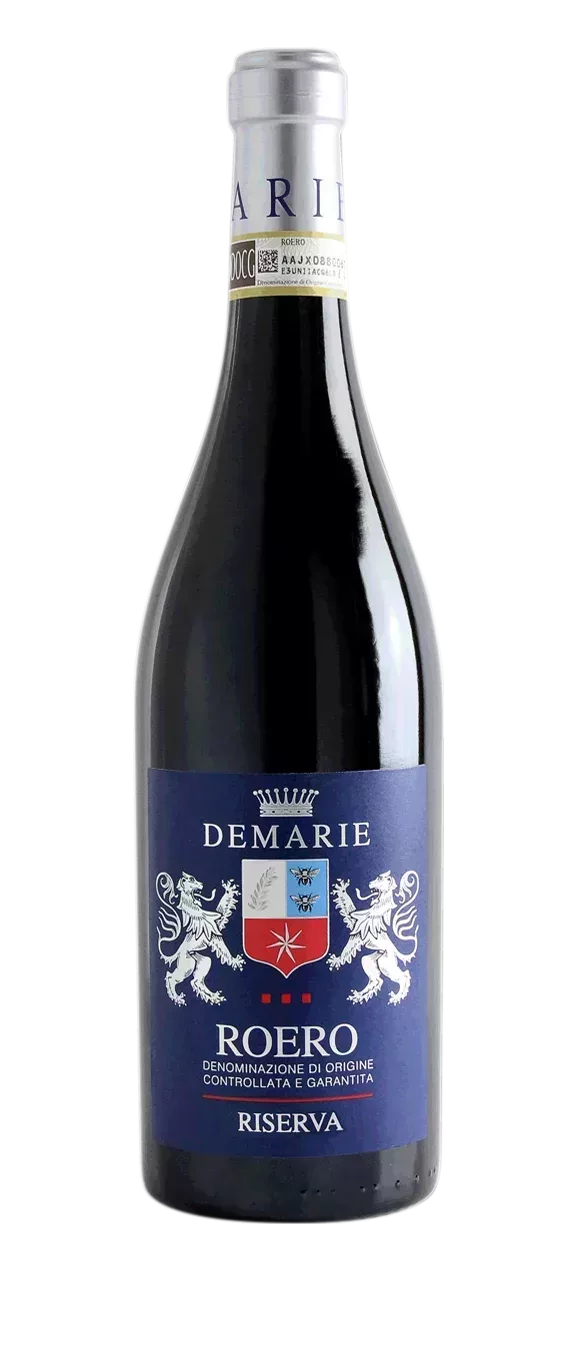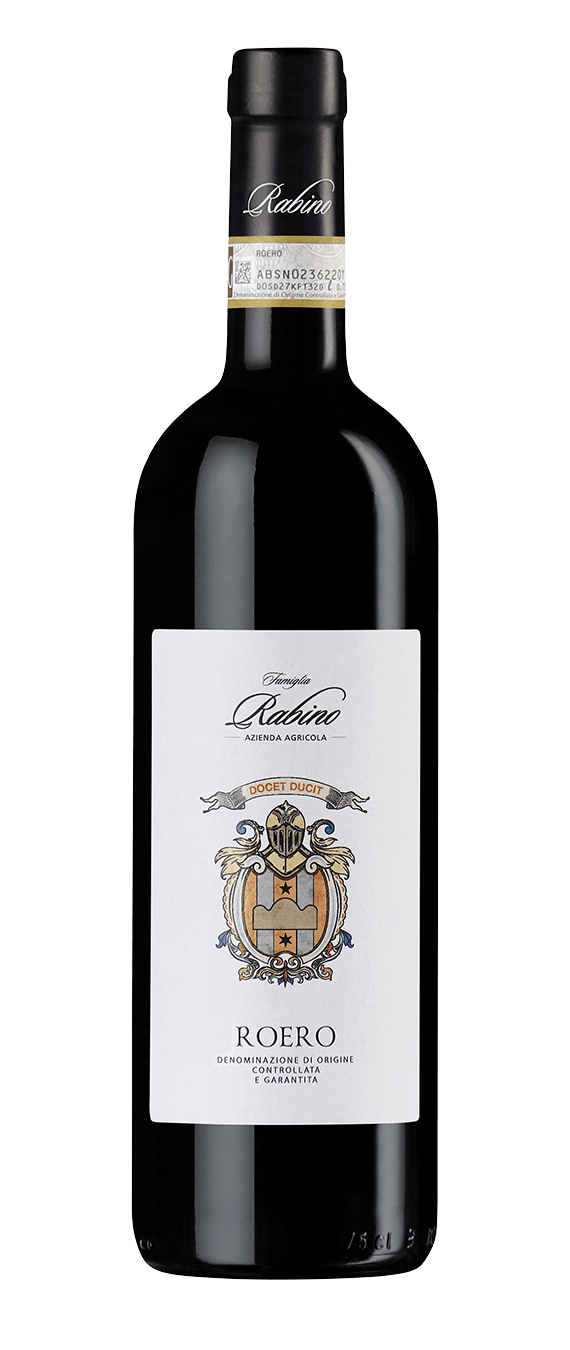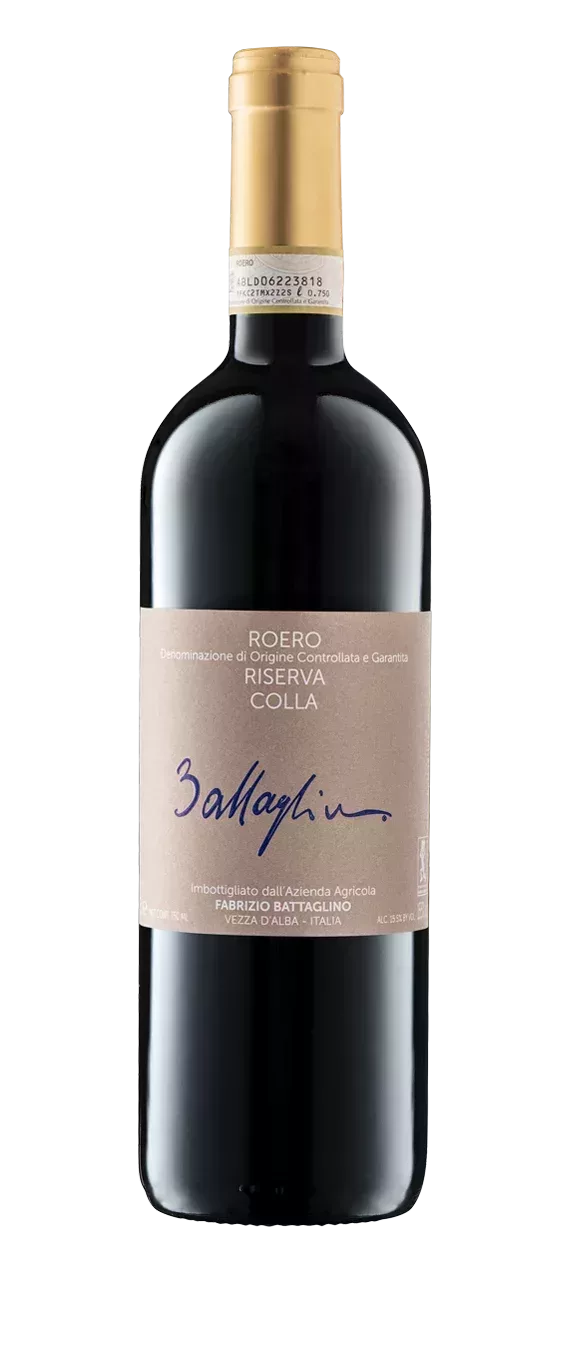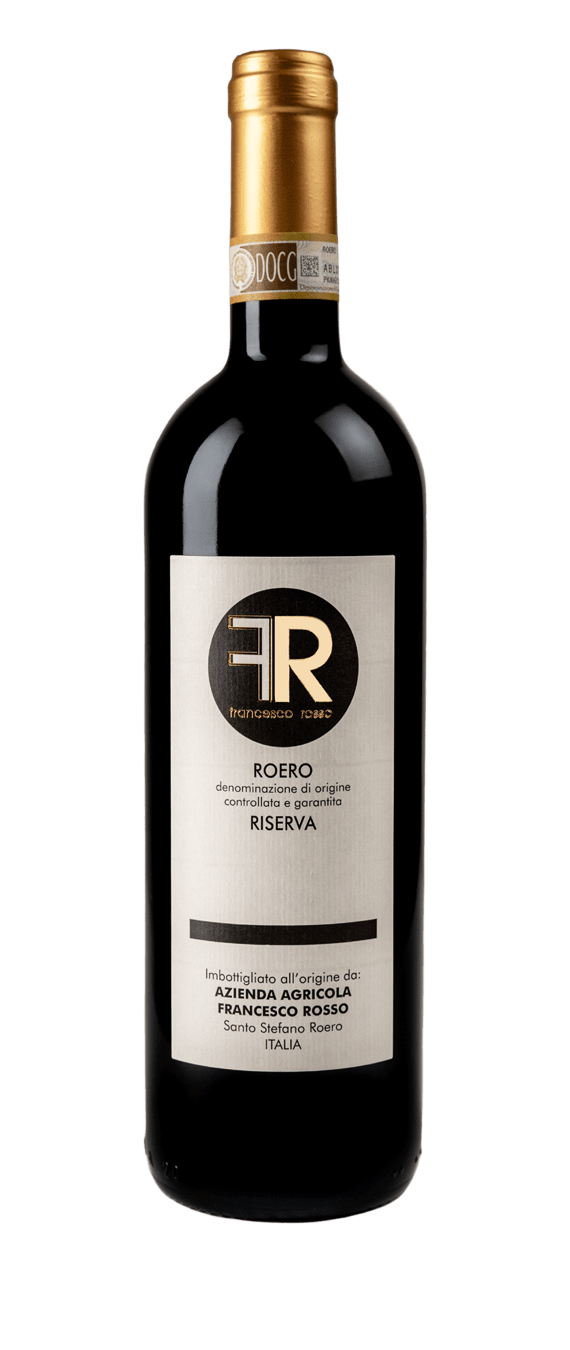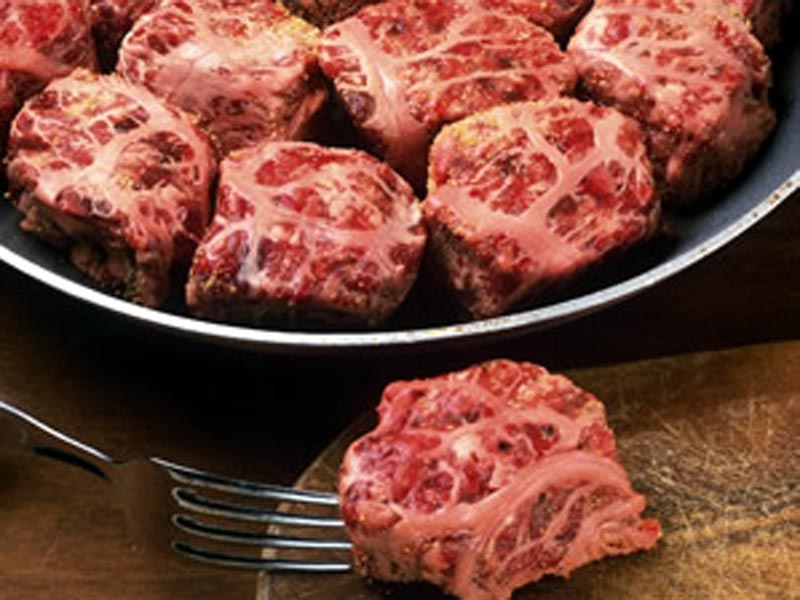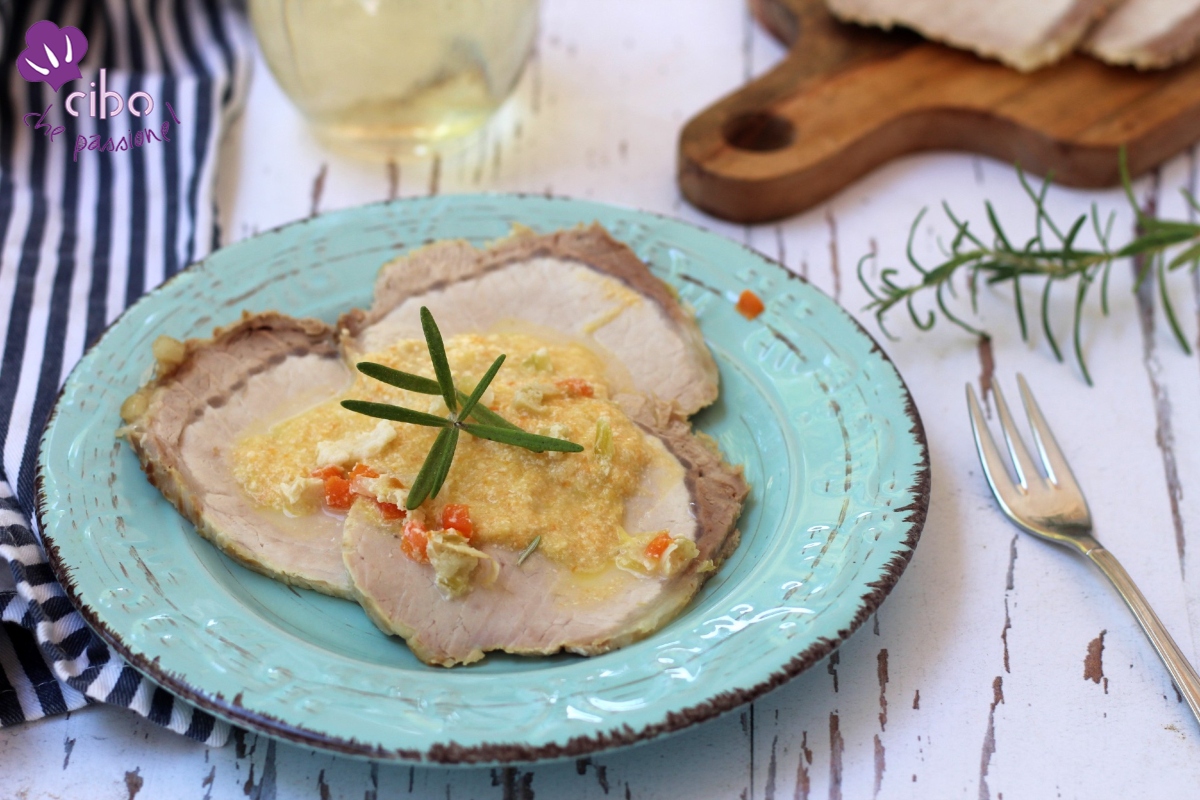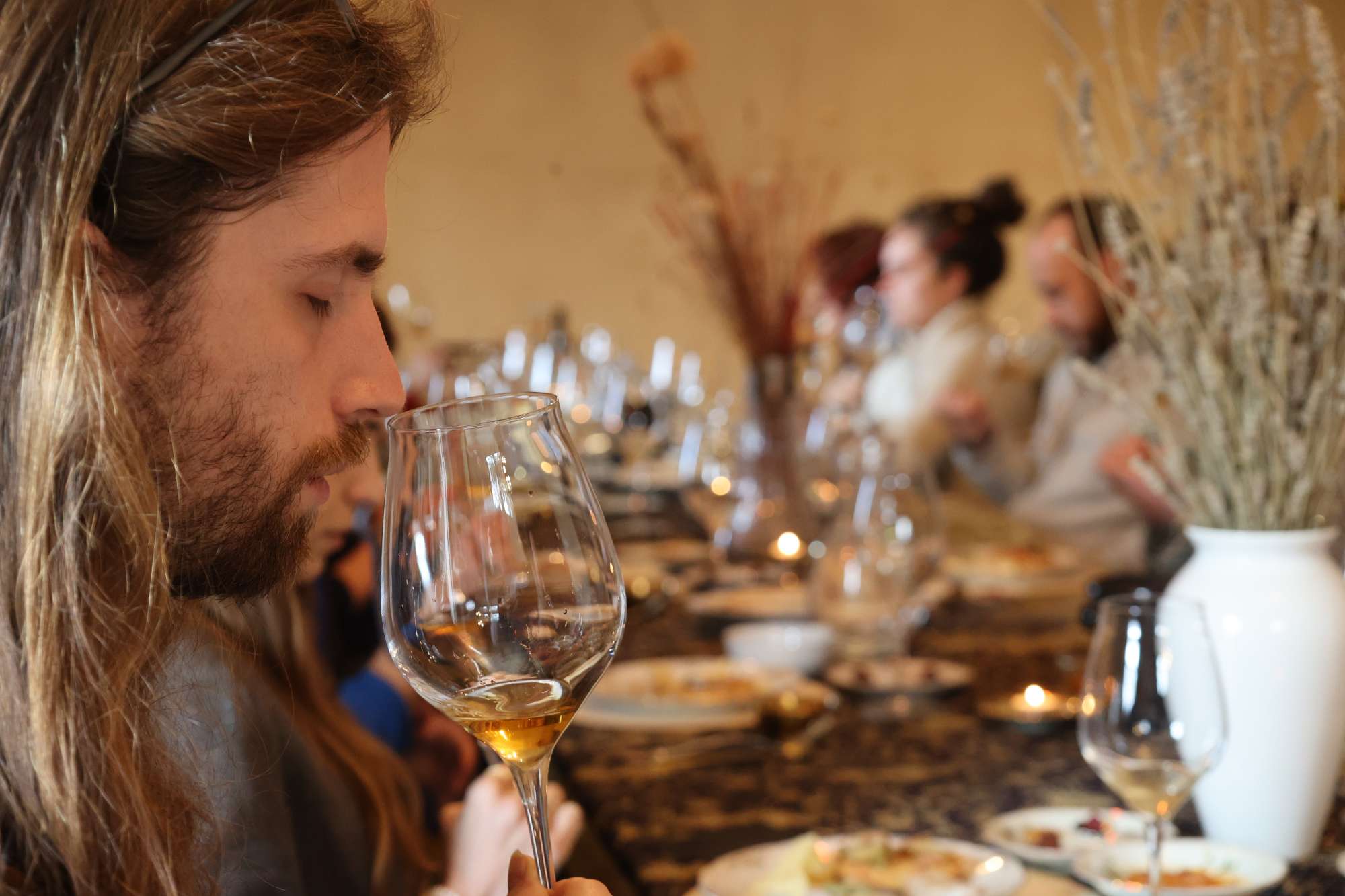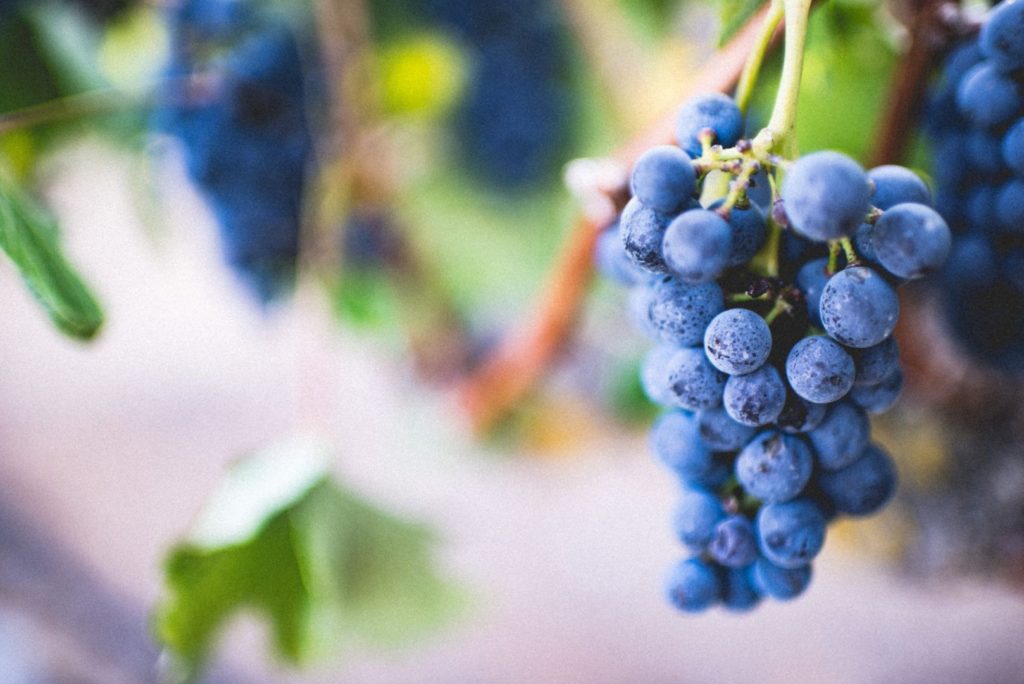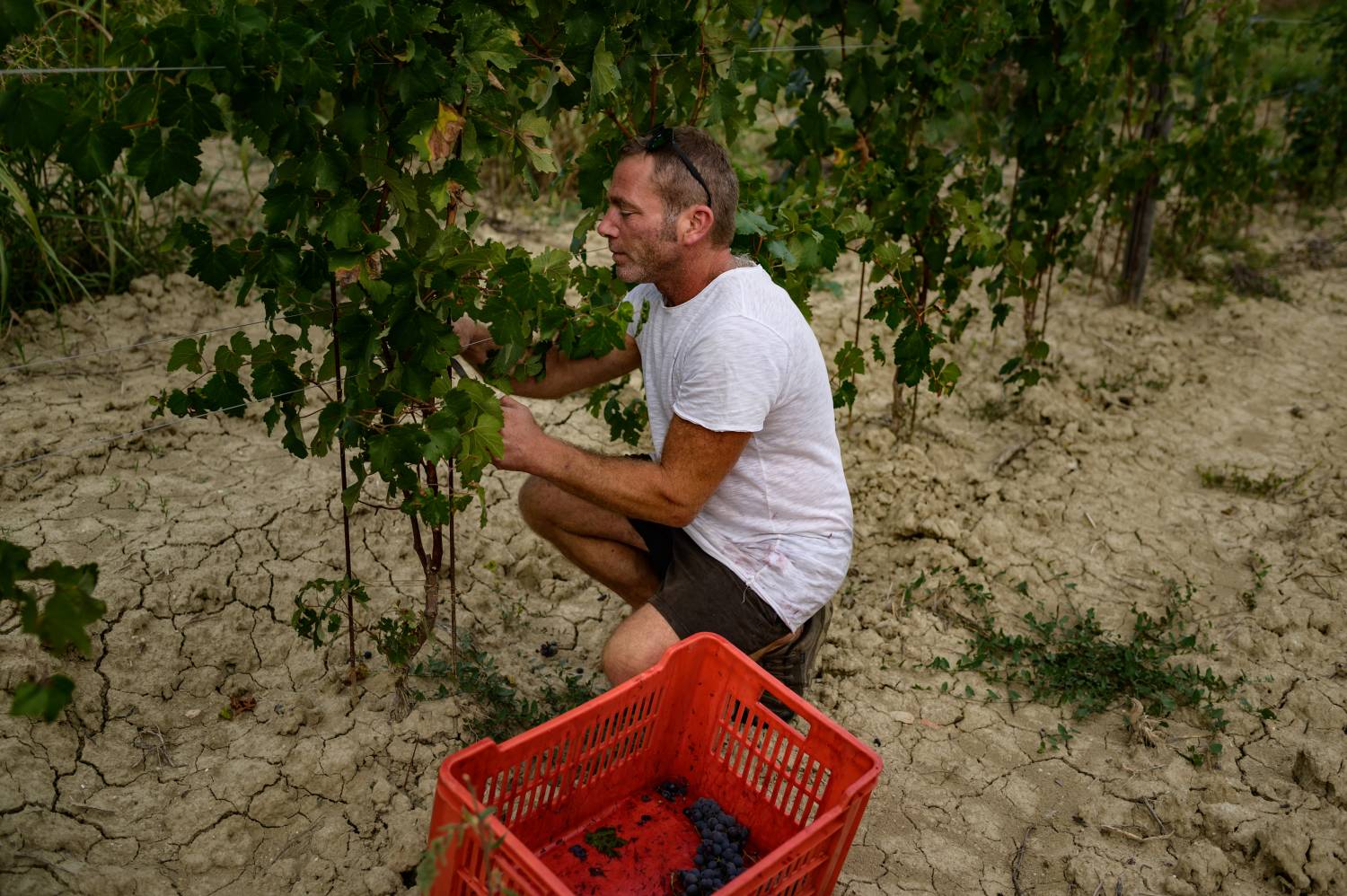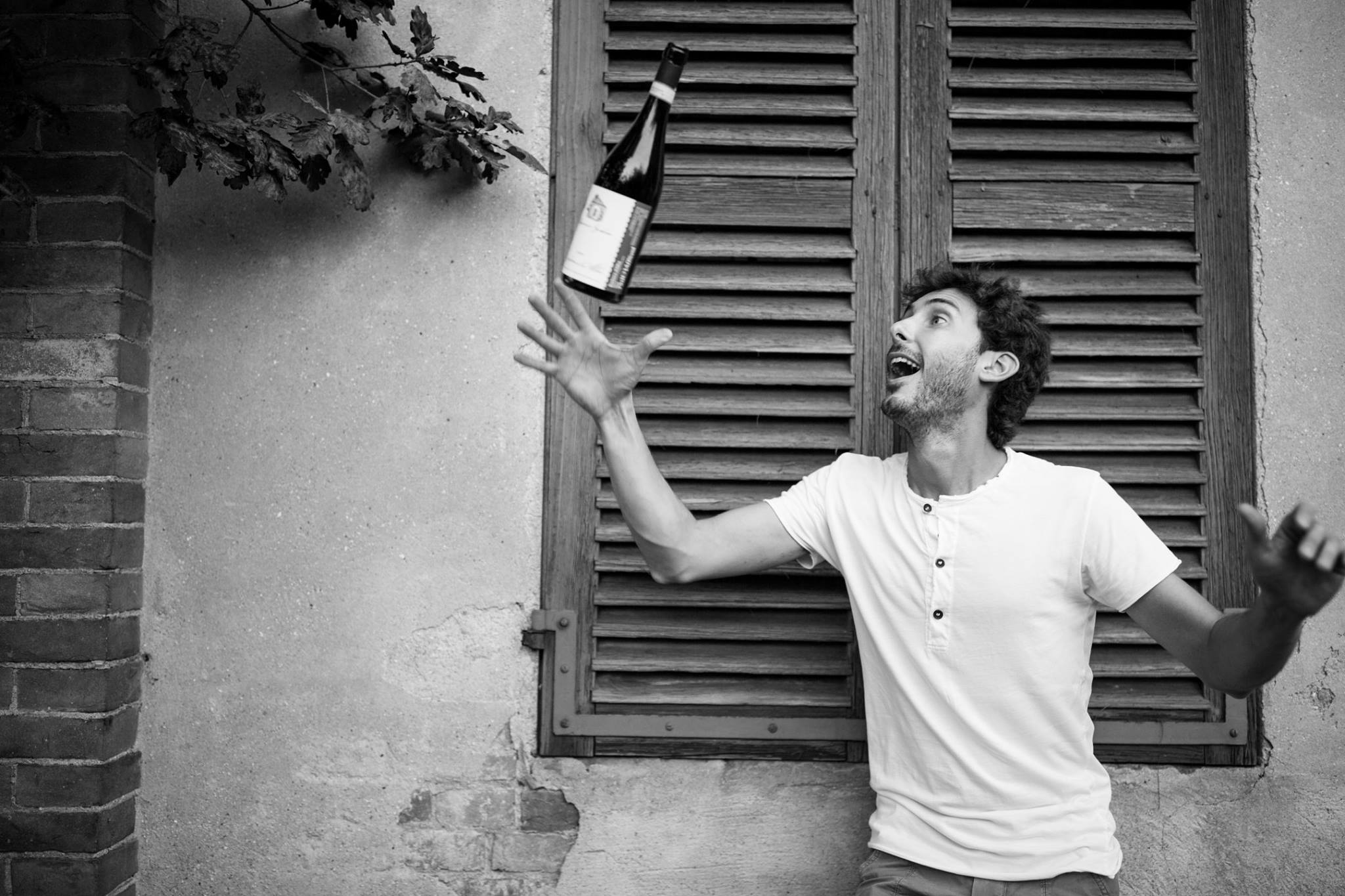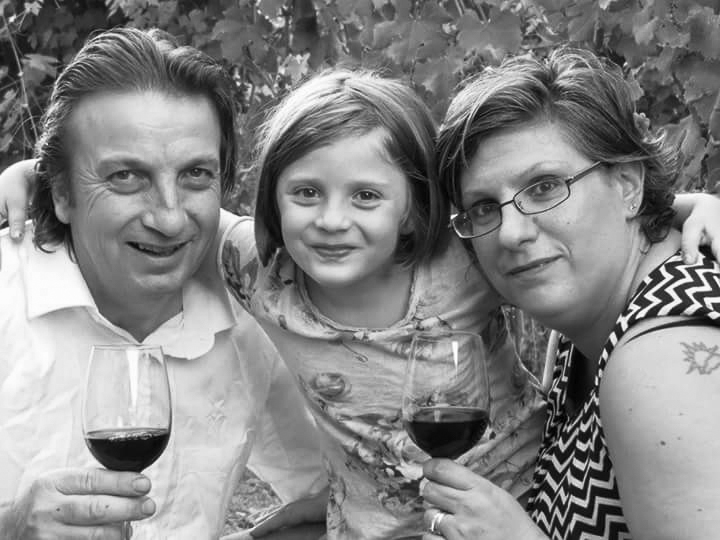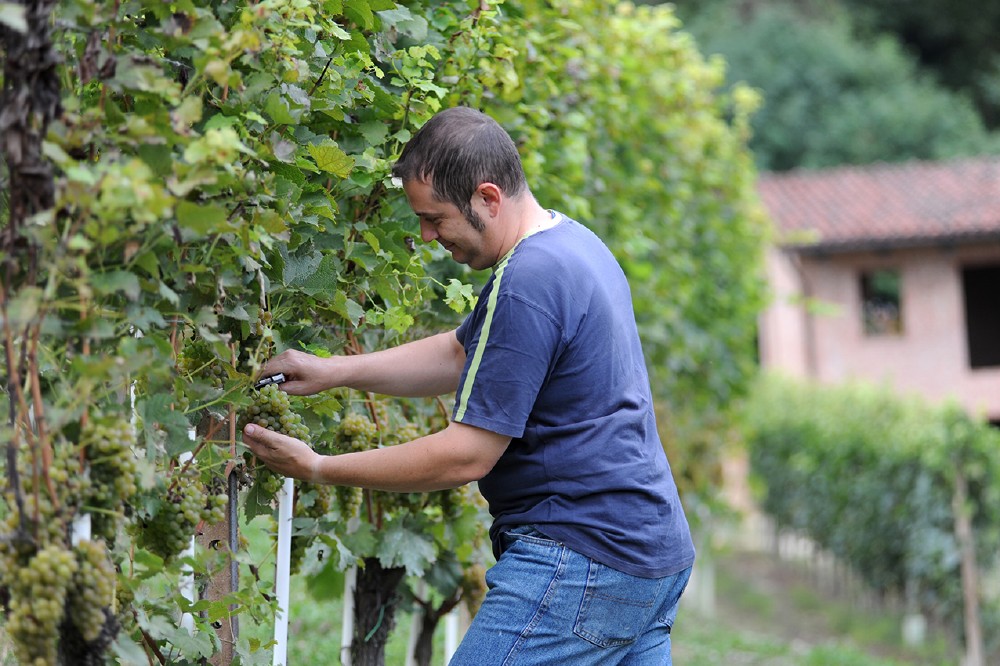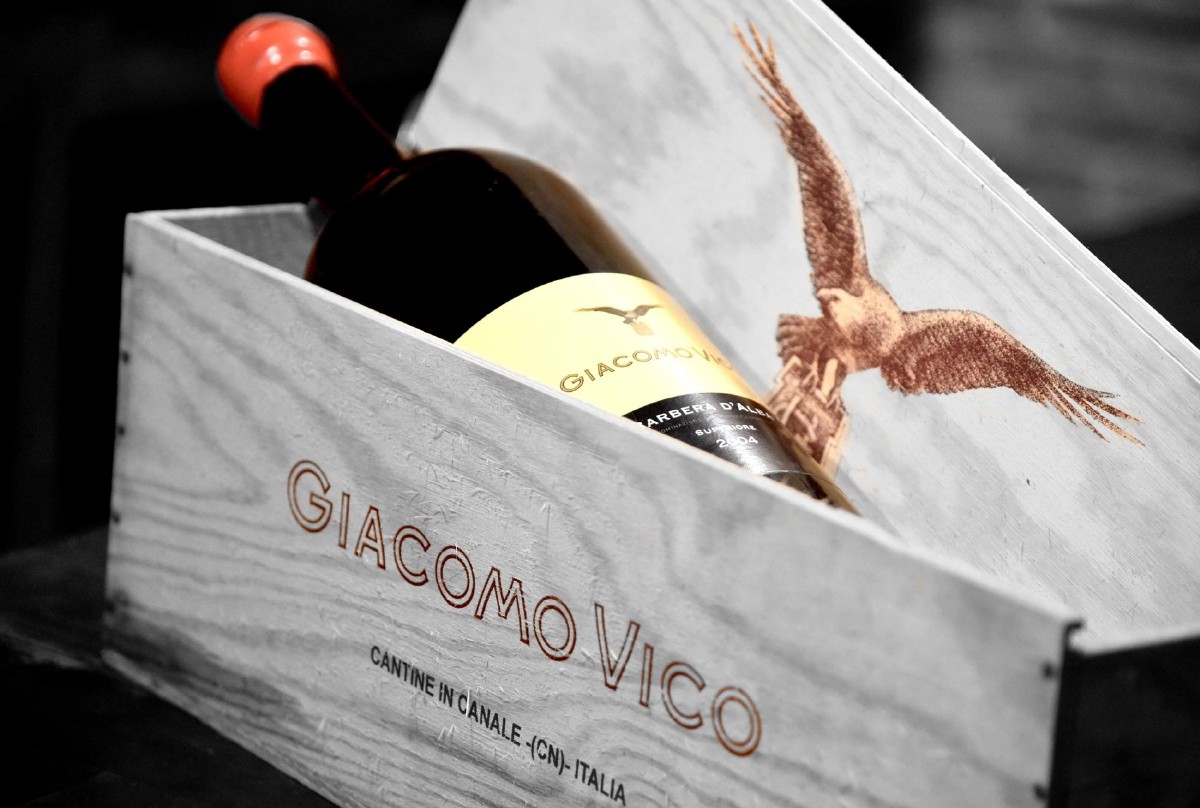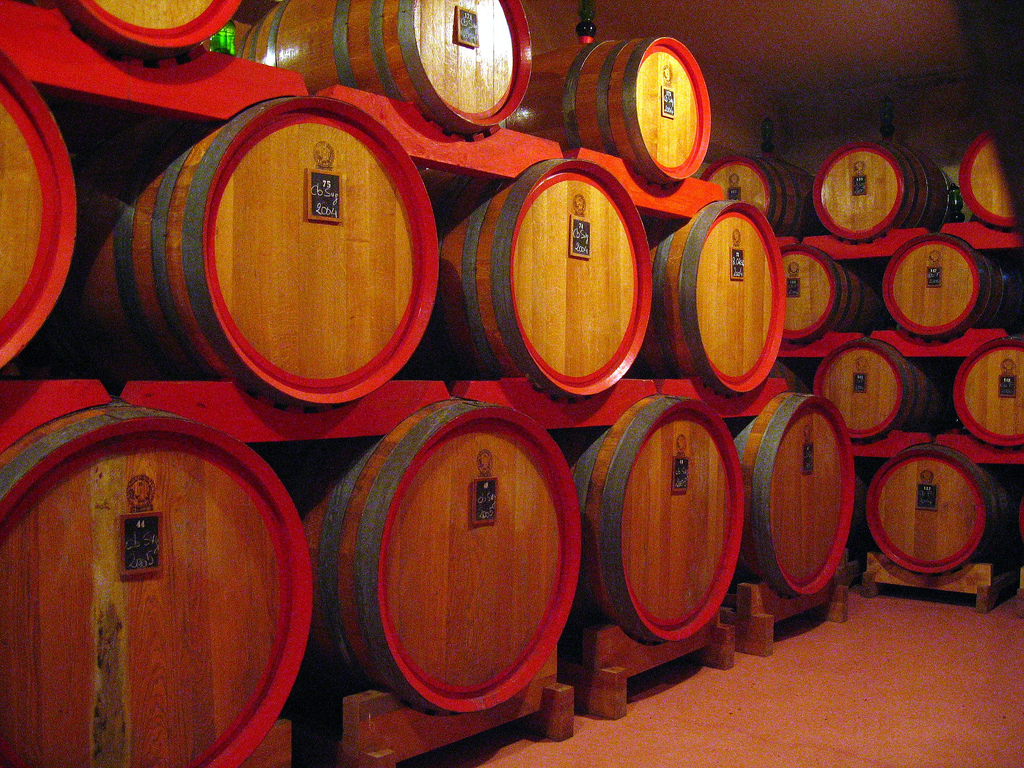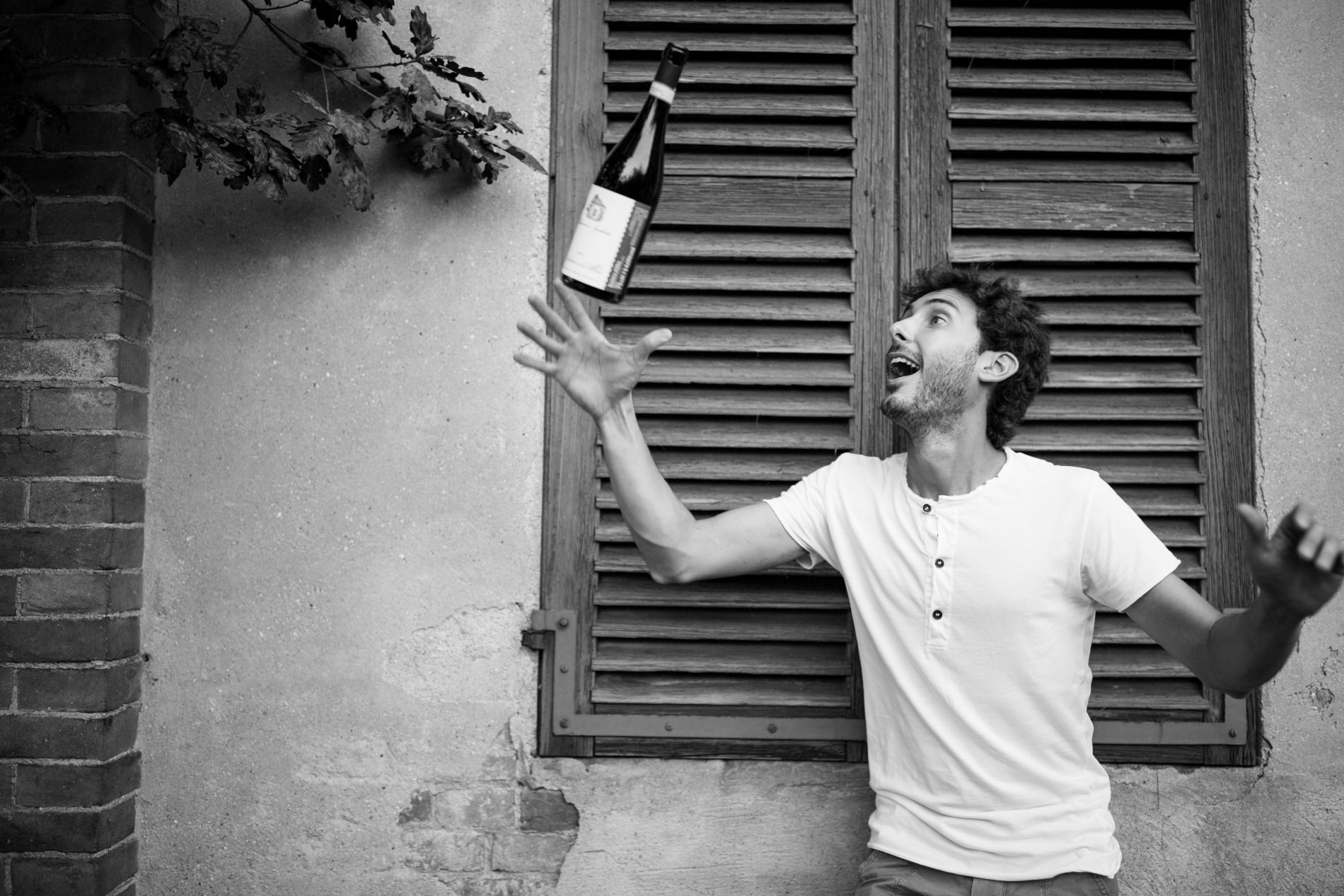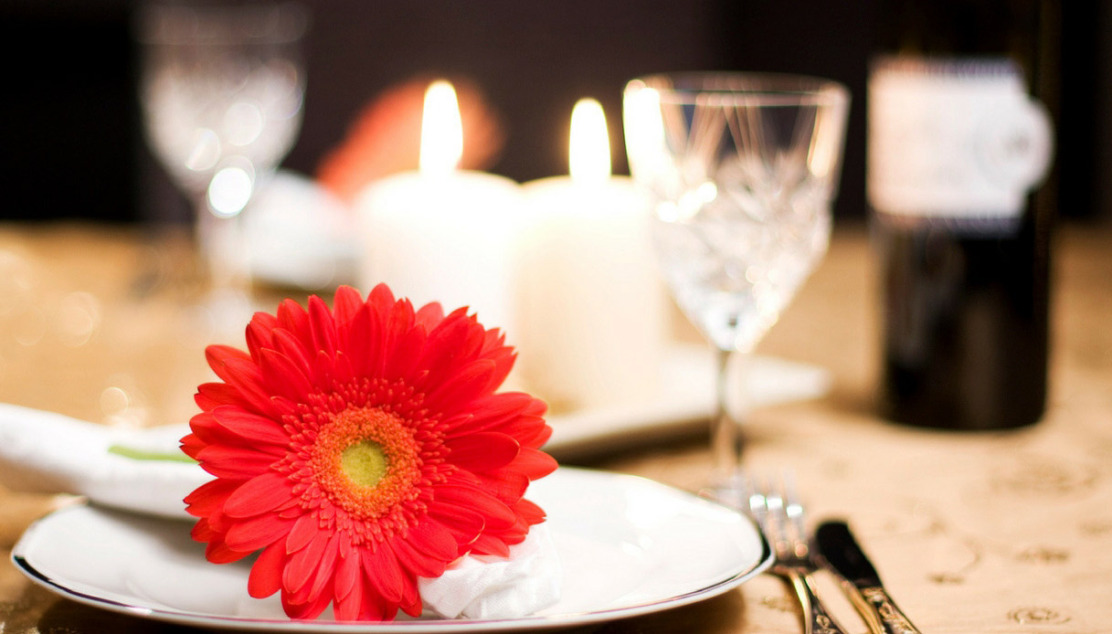
Roero DOCG
The great reds of Piedmont are the offspring of the area’s main grape variety, nebbiolo. Roero DOCG is no exception, a wine of great elegance and finesse that combines the noble stature of wines born from this extraordinary grape variety with the distinct personality of its terroir, Roero.
Roero DOCG has deep roots, but a rather recent history. Ancient are the ties of nebbiolo to Roero, the hills that stretch to the left of the Tanaro River in the direction of Turin. Yet, the appellation was not created until the mid-1980s, after a long process of awareness on the part of producers, who had to confront each other in a heated debate between tradition and winemaking goals.
On the one hand, tradition taught that nebbiolo-based wines, in Roero, had always been young and fragrant, not very prone to aging: the so-called nebiulin (a “little” young nebbiolo), to which it had always been permissible to add a small percentage of arneis grapes.
On the other, there was an awareness that to create a Nebbiolo wine of character and longevity, one would have to abandon the blends of the past and devote oneself to the creation of a label monovarietal, capable of enhancing the territoriality of Roero, including its vocation for a drink played on finesse rather than on power.
After thirty years of experience and experimentation, today Roero DOCG is the culmination of a quality that has made the territory its main difference. A red that belongs in every way to the left bank of the Tanaro, which makes the varietal purity (now almost all producers use 100% Nebbiolo grapes) its flagship and that it is not afraid to present itself alongside the holy monsters of the Langhe, Barolo and Barbaresco, with whom he can safely “sit at the table.”
Vines
Appellation
Color
Type
Min. alcohol
Variants
Established on
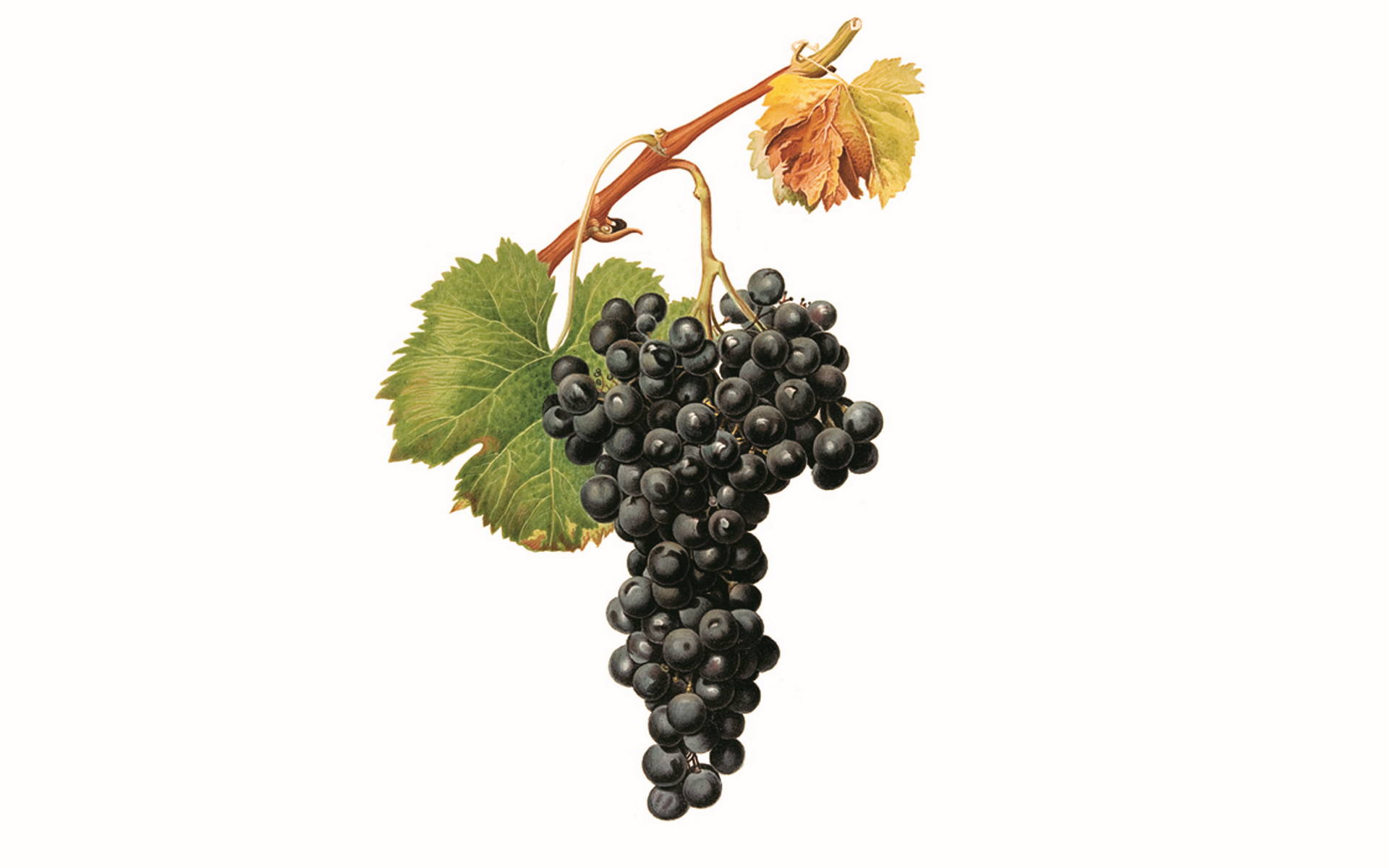
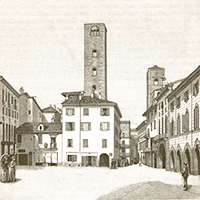
The history of Roero DOCG
A nebiulin (a "little" young nebbiolo) now grown up
Roero DOCG takes its name from the territory on the left bank of the Tanaro River, Roero, a feud of the Asti family of the same name.
"Roero" was the name of the noble Asti family that, starting in the 13th century, began to expand its holdings in the hills located to the left of the Tanaro River near Alba. The ancient medieval fief thus went on to identify the territory of some 20 villages that today wind between Alba and the Turin plain.
Legend has it that between 1167 and 1168 Frederick Barbarossa is said to have spent the winter in the castle of Monte Acuto, today's Monteu Roero, at whose table "Nebbiolo del Roero" was served. If the emperor's presence is plausible (at least according to Slovenian historian Paul Pachner's reconstructions), it is impossible to know what wine he had enjoyed. Imagining, however, is a more than legitimate exercise.
The first certain mention belongs to the 14th century and refers to Canale, one of the most important villages in the area. For the rent of land, the notary Guglielmo Bayamondo owes the Counts of Roero two carloads of wine, one of moscatello and the other de "bono, puro vino nebiolio." In Canale itself, the municipal statutes of the 15th century set September 29 as the start of the grape harvest. Somewhat late date, compatible with the slow ripening of Nebbiolo grapes, the later in Piedmont.
One has to leap back at least 500 years to find Nebbiolo del Roero at the center of oenological discourse. In 1970, four years after Barolo and Barbaresco, the Nebbiolo d'Alba appellation was born, covering a large area around the "capital of the Langhe," including the hills on the left bank of the Tanaro River.
The idea began to spread among producers that Nebbiolo d'Alba was not enough to define the identity of the wines made in Roero, which, in the meantime, experienced a period of extreme notoriety thanks to the prominence of an indigenous white grape variety: Arneis.
After bitter discussions about the nature of the new appellation, on March 18, 1985, the decree-law was approved that sanctioned the birth of Roero DOC with a particular ampelographic base: 95 percent nebbiolo, arneis between 2 and 5 percent, and a maximum of 3 percent of other grape varieties grown in Roero.
The concession of blending with arneis served to respect a very common practice on the left bank of the Tanaro, namely that of adding other grape varieties to the local nebbiolo in order to obtain easy-drinking wines. They were the so-called nebiulin (a "little" young nebbiolo), very popular during the nineteenth century, young and chiseled versions of Barolo and Barbaresco, certainly fresher and "workable," certainly less austere and long-lived.
The new appellation had the merit of bringing back the discussion about the ability of Roero nebbiolo to compete with the great Piedmontese reds. The idea of mixing Arneis with Nebbiolo was gradually abandoned, as was the idea of using other grape varieties. Roero Doc could find its identity in the sandy soils and verdant microclimate of its area of origin.
It was from this burst of pride that, in 2004, the Roero DOCG was officially recognized, whose regulations allow for 95 to 100 percent Nebbiolo grapes. The arneis grape variety formally disappeared and, with it, the idea of nebiulin.
Today the vast majority of producers make Roero DOCG wine in purity, 100% nebbiolo grown on the hills of the municipalities in the district: a hymn to the diversity of a grape variety that has found its true vocation even at the cost of abandoning traditions that did not enhance its potential.

Nelle botti grandi invecchiano il Roero DOCG e la Barbera d’Alba DOC
Roero DOCG: Terroir
Sandy, geologically young soils give Roero DOCG fine, savory traits.
The Roero DOCG appellation encompasses nineteen municipalities in the province of Cuneo included between the orographic left of the Tanaro River and the southern foothills of the Turin plain. To be clear, the Roero territory runs in a south-north direction between Santa Vittoria d’Alba and Montà d’Alba and in a west-east direction between Pocapaglia and Govone.
Although bordering the Langhe, the Roero has developed land of its own. While the Langhe rose from ancient sea beds in the Oligocene (about 30 million years ago), the Roero appeared about 20 million years later, only in the Pliocene.
Based on fossil finds, today’s left bank of the Tanaro River must have looked like a lush tropical beach. Evidence of this is the fossilized shells, leaves and tree trunks, joined by small fish, a sign that we were in shallow waters.
Roero soils are therefore younger than those in the Langhe, generally softer and with better permeability, due to a significantly higher percentage in sand.
Marly-sandy soils that form a substrate highly suited to viticultural cultivation, capable of etching, in both white and red wines, captivating floral notes from the olfactory point of view, and structures played on finesse, elegance and sapidity, a true peculiarity of this area.
A morphological characteristic of the Roero is the formation of the Rocche, imposing gullies of yellow sandstone that suddenly break the landscape, creating rock ramparts and canyons up to hundreds of meters deep, immediately evident because they expose the belly of the hillside, to the otherwise verdant vineyards that are interspersed with them.
Preferred Altitude
Preferred Soil
Crus / MGA
Towns where it's produced
Roero DOCG: Vines
The Roero DOCG is a single varietal wine, and therefore can be made exclusively by Nebbiolo grapes
Nebbiolo: minimum 95 percent; grapes from non-aromatic red grape varieties suitable for cultivation in the Piedmont Region up to a maximum of 5 percent may also compete jointly or severally.
Piedmont’s noblest red grape needs to grow in a carefully chosen environment and growing conditions. It sprouts early and the fruit generally ripens in mid October. The bunch is medium to large, a winged pyramid shape with medium to small grapes having a consistent blue-black skin with violet nuances. This is the vine that produces Barolo and Barbaresco, Nebbiolo d’Alba... you can read more about Nebbiolo here.

Roero DOCG: Features
Soft, complex but never complicated-a fine and elegant wine.
A savory red of undisputed finesse and elegance, Roero DOCG is the champion of its area. Complex without ever being complicated, it gives full satisfaction thanks to a deep yet fragrant soul that brings it closer to the great expressions of Barbaresco rather than Barolo.
Roero has a fruity vocation that is evident from its attractive ruby color that, over time, becomes dressed in garnet hues. A classy red, capable of giving, when young, a ringing savory pleasantness and which, with aging, transforms into velvet emotions and unparalleled softness with spicy accents.
Sight
Roero DOCG has a beautiful ruby red color with garnet reflections that become more pronounced as it ages.
Nose
Intense and distinctive, distinguished by dark fruit notes. The Riserva version veers toward balsamic and spicy, intensifying the quaternary hints given by wood aging.
Taste
Dry, full-bodied, harmonious not overly tannic. The main characteristic of Roero is the savory freshness given by the sandy soils, which, in the best expressions, stays alive even with aging.
Official regulation
Color
Perfume
Taste
Foam
Get a bottle directly from the producer
LoveLanghe Shop is a niche of great wines from the Langhe area: some unknown to most, some already quite recognized but perhaps hard to find in the big distribution, others in which we see potential but that have yet to grow.
Bottles are shipped directly from the winery to your home, with no intermediary.
Service
Serve in large tulip-shaped glasses at a temperature of 18°-20° C.
Roero DOCG: what to pair it with
Sapidity, freshness and pleasantness place Roero DOCG at the top of gastronomic reds.
Extremely flexible, it goes well with many dishes: from stuffed pasta dishes to lasagna with meat sauce, from roasts to stews, from grilled meats to medium-aged cheeses.
Younger versions can even accompany fish.
Recipes to pair with Roero DOCG
-
![]()
-
![Grive]()
-
![Omelette with robiola Omelette with robiola]()
-
![]()
Pork in milk A tasty variation of the roast
- Preparation:
- 1h for the pork
- Cooking:
- 30m for the fritters
Roero DOCG: Production
Made from a robust and vigorous grape variety, Roero is the result of delicate winemaking.
Roero DOCG is now made from pure nebbiolo grapes grown exclusively in the nineteen municipalities of the appellation.
Nebbiolo is the noblest grape in Piedmont, and it also enjoys the best locations, care and attention in Roero. It is a robust and vigorous vine, of good adaptability, capable like few others of returning in the glass the differences-even minimal ones-of the soils where it is planted
It is for all intents and purposes a native variety of the area, which has adapted perfectly to the marly-sandy soils found here.
In the winery, Roero DOCG follows a traditional and delicate vinification so that the nebbiolo can express itself in all its magnificence.
After crushing and destemming, the grapes are usually mash in temperature-controlled stainless steel vats, where a more or less long maceration on the skins begins, accompanied by alcoholic fermentation.
The minimum maturation is 20 months calculated from November 1 of the year the grapes are harvested, with a minimum of 6 months in wood.
There is also the Riserva type: in this case, the maturation period becomes 32 months, while the stay in wood remains unchanged.
Time in wood
Time in bottle
Time to market
Grapes Yield
Meet the producers
Curiosities
A wine born in the "canyons" of the Roero, in an area rich in biodiversity.
The Rocche form a veritable “cordillera” that obliquely splits the Roero territory in a southwest, northeast direction.
The division creates a “canyon” with spectacular views of the surrounding hills, often covered with lush forests. There are several trails and Mtb routes that enhance the ecosystem of the Rocche, as well as an Ecomuseum of the Rocche del Roero that should be an essential destination for understanding the culture and nature of this area.
In contrast to the Bassa Langa (that of Barolo and Barbaresco to be clear), the Roero haspreserved a much richer andmore varied biodiversity. Vines, though well represented, do not yet occupy all the spaces available for cultivation.
Roero is famous for its vegetable gardens and orchards, which produce specialties such as asparagus, peaches, pears, strawberries and… truffles.
Yes, because the forests of the Roero, lush, secluded and of good size (between Pocapaglia and Sommariva del Bosco there is a place called America dei Boschi), are the ideal cradle for the Tuber magnatum Pico, the highly prized White Truffle of Alba, which, in autumn, becomes the king of Piedmontese tables.



















